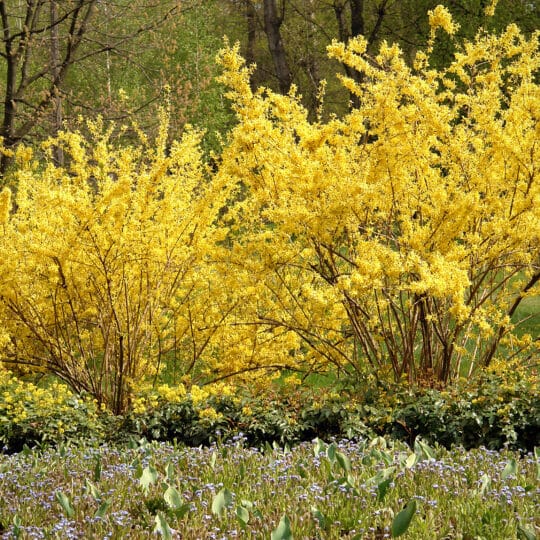Identifying Plant Issues
Forsythia Galls
Posted
March 16, 2023

Identifying plant issues is easier when there’s something to see. Even when there are no leaves on a tree or plant, it can show signs of disease and decay. Here’s what to watch for before your plants start to bloom.
Identifying Plant Issues
With spring right around the corner, plants and trees are getting ready for the big beautiful show. But before they bloom, they could be showing you something even more important. There are some signs of disease and decay you want to watch for on bare branches.
If you have forsythia shrubs around your yard, you know how beautiful and bold it can be. The bright yellow flowers are one of the first to burst come spring. These tough shrubs can also weather drought and cold like no other. However, they’re not immune to disease.
Before your forsythia blooms, take a good look at its bare branches. Do you notice anything out of the ordinary? Any signs of swelling on the branches could be something called phomopsis galls. Many other woody plants get galls, but some of these round, bumpy growths are caused by fungus.
One way to determine the cause of the growth is to carefully cut into it. Phomopsis and other fungal galls will be solid throughout. If you notice small chambers or boring inside, it may have been caused by insects. No matter the cause, there’s a problem that should be quickly addressed.
Plant Treatment Plan
Once you determine what has caused the growths, it’s time to put a treatment plan in place. The first step is to remove any galls you find. For shrubs, small trees, and other plants close to the ground, this should be easy enough to do on your own. For larger trees and shrubs you can’t reach without a ladder, it’s best to call a professional to prune and treat the issue.
Whatever you remove, you need to carefully dispose of it immediately so it doesn’t affect surrounding plants. You should also then sterilize the tools used to cut the infected branch. Watch the area for signs of additional growths throughout the year.
Even hardy plants require care and attention. Wouldn’t it be better to benefit from the beauty of blooming plants than have to deal with treating a disease? Learn more about how to identify, treat, and prevent problems for the plants in your yard. Contact Elite Tree Care for more information on specific plants and to help evaluate your situation in any season.